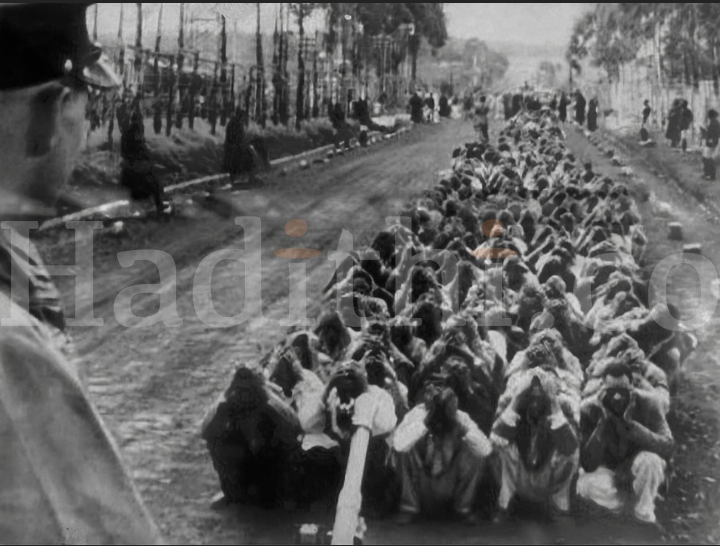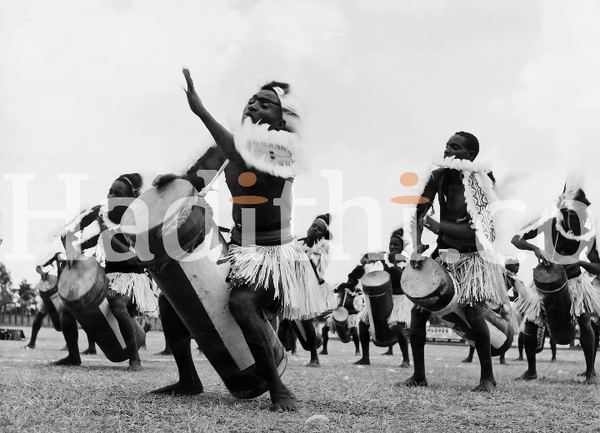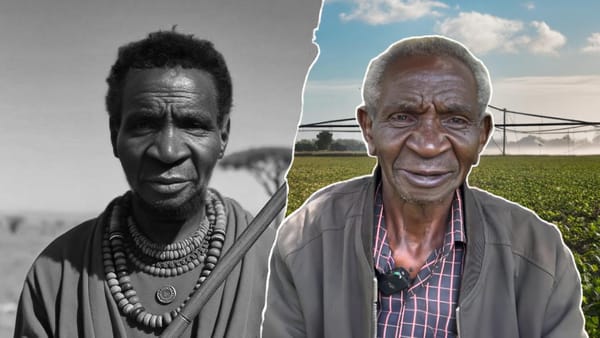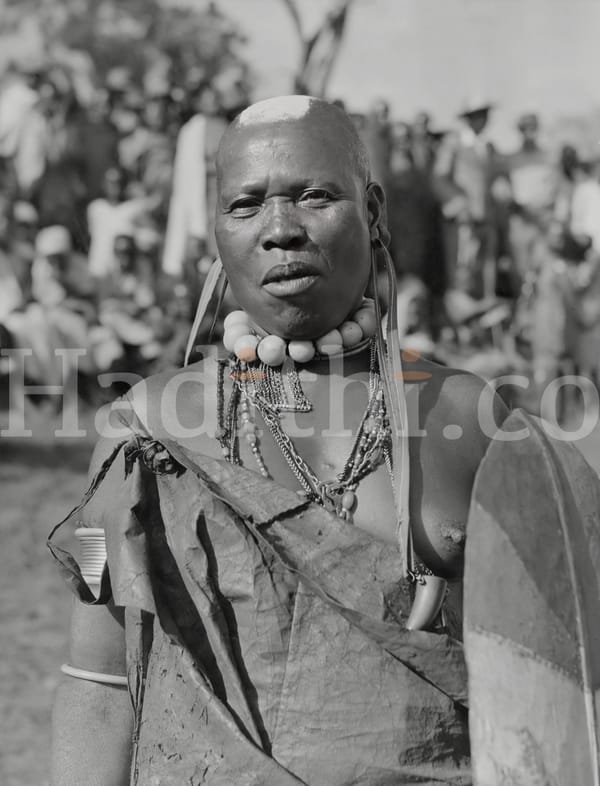A Struggle for Land and Freedom
What sparked the Mau Mau movement in Kenya? Mzee Kimani Njenga shares powerful stories of loss and strength as indigenous people faced harsh land grabs by British colonizers. How did the GEMA community turn their pain into a fight for freedom?

How it Steamed MAU MAU
In a poignant recollection, Mzee Kimani Njenga from Kiambu County shares the harrowing experiences of Kenyans during the colonial era, particularly the massive detention of individuals that fueled the Mau Mau uprising. This movement, comprising primarily the Gikuyu, Embu, and Meru (collectively known as GEMA), arose as a response to the relentless injustices faced by indigenous communities, particularly the seizure of their lands by British settlers.
Land Dispossession: The Catalyst for Resistance
The roots of the Mau Mau movement can be traced back to the systematic land dispossession perpetrated by British colonizers. Vast tracts of fertile land, especially in the Central Highlands, were expropriated from the indigenous populations. The Kikuyu people, largely agrarian, were particularly affected, as their livelihoods depended on the very lands that were now being taken away. The British settlers, attracted by the rich agricultural potential of these lands, forcibly evicted local communities, leading to widespread impoverishment and dislocation.
Mzee Njenga recalls the deep sense of loss and betrayal felt by his community. The land was not just a source of sustenance; it was integral to their identity, culture, and spiritual beliefs. The dispossession disrupted social structures, as families were torn apart and communities fragmented. People who once thrived on their ancestral lands were reduced to laborers on the very farms that had belonged to their forefathers, struggling to survive under oppressive conditions.
The Emergence of the Mau Mau Movement
In the face of such injustices, the Mau Mau movement emerged as a radical response to colonial oppression. While the movement began to take shape in the late 1940s, it gained significant momentum in the early 1950s. It was characterized by a commitment to reclaim land and assert the rights of the indigenous population. Most of the Mau Mau fighters were veterans of the Second World War, who had returned with a newfound determination to fight for their rights. Many were circumcised men in their 1940s age group, symbolizing their readiness to take on the struggle.
Roles of Mau Mau Members
Mau Mau members played various critical roles within the movement:
● Dedan Kimathi: One of the most famous leaders of the Mau Mau, Kimathi was a key military strategist and commander. He led numerous attacks against British forces and became a symbol of resistance. His leadership and charisma helped galvanize fighters and supporters alike.
● Mugo wa Kibiru: A spiritual leader and one of the early figures in the Mau Mau movement, Mugo wa Kibiru was known for his prophetic visions. He inspired many with his calls for resistance and was involved in the oath-taking ceremonies that cemented the fighters' commitment to the cause.
● Jomo Kenyatta: Although he was arrested during the uprising, Kenyatta was a significant figure in the nationalist movement. His leadership of the Kenya African National Union (KANU) and subsequent imprisonment turned him into a martyr for the Mau Mau cause.
● General China: Another prominent leader, General China was known for his tactical prowess in guerrilla warfare. He played a pivotal role in organizing attacks against colonial forces and was instrumental in coordinating the fighters in the forests.
● Wangari Maathai: Though not a direct participant in the Mau Mau uprising, her later activism was deeply inspired by the struggles of the Mau Mau, especially regarding land rights and environmental conservation.
The Oath and Its Significance
A crucial aspect of joining the Mau Mau was the taking of an oath. This oath was a solemn ritual, often conducted in sacred spaces, symbolizing a deep commitment to the struggle for independence. The process typically involved:
- Preparation: Participants would gather in a secluded area, often within the forest, away from prying eyes. The atmosphere was charged with emotion, as the oath was considered a sacred bond.
- Ceremony: Elders or respected leaders would preside over the ceremony, invoking ancestral spirits to witness the oath. Participants would often speak of their grievances and the need for resistance, reinforcing the seriousness of their commitment.
- Content of the Oath: The oath involved a pledge of loyalty to the Mau Mau cause, a vow to protect fellow members, and a promise to keep the secrets of the movement. It often included a symbolic act, such as cutting oneself to mix blood, signifying the gravity of the commitment. This act served to bind members not only to one another but also to the land and their ancestors.
- Consequences: Breaking the oath was considered a grave offense, leading to severe repercussions, including punishment or exclusion from the movement. This heightened the sense of loyalty and unity among the fighters.
However, the colonial government viewed these oaths with suspicion, interpreting them as acts of rebellion. This led to increased surveillance and repression, as the authorities sought to quash the movement before it could gain further traction. In cases where a fighter was injured, the rejection of hospital care in favor of the soil underscored their unwavering commitment to their cause.
State of Emergency and Colonial Repression
In response to the escalating unrest, the British colonial government declared a state of emergency in October 1952. This marked a significant turning point in the history of the Mau Mau movement. The declaration was accompanied by widespread arrests, detentions, and brutal crackdowns on suspected Mau Mau members. Among those targeted by the movement were the Home Guards, who became enemies of the Mau Mau by acting as informers for the colonial government.
One of the most notable figures to be arrested during this period was Jomo Kenyatta, the leader of the Kenya African National Union (KANU). Kenyatta’s arrest was not just a tactical move by the colonial government; it was a calculated attempt to dismantle the leadership of the nationalist movement. He was marched to Kapenguria, a remote detention center, where he and other leaders were held under harsh conditions. The journey along what would later be known as Kapenguria Road became an enduring symbol of the sacrifice and struggle for independence.
The Impact of Detention
The detention of Kenyatta and other leaders had a profound effect on the Mau Mau movement. While the colonial government hoped that by removing key figures it could suppress the uprising, the opposite occurred. Kenyatta’s imprisonment galvanized support for the Mau Mau cause, transforming him into a martyr and symbol of resistance against colonial oppression. The brutality of the colonial response, including mass detentions and violent reprisals against suspected Mau Mau sympathizers, only deepened the resolve of the movement. Ordinary Kenyans rallied behind the Mau Mau, viewing it as a legitimate avenue for reclaiming their rights and dignity.
The movement also had a significant female component, though women who participated in the Mau Mau were often subject to strict conditions. Many were young, unmarried girls who could not conceive, reflecting the movement's focus on maintaining a certain discipline among its ranks. Food was often procured at night, with women sometimes risking their safety to bring sustenance to the fighters hidden in the forests.
Life in the Forest
The Mau Mau fighters took to the forests to evade capture. They established bases where they trained, strategized, and made weapons, sometimes even seizing arms from British soldiers in combat. Living in the forests was fraught with danger, yet it was essential for their survival. The fighters displayed remarkable resilience, often going days without proper food while relying on their ingenuity to sustain themselves.
The Legacy of the Mau Mau Movement
The Mau Mau uprising, although met with significant repression, ultimately laid the groundwork for Kenya’s independence. It highlighted the deep-seated grievances of the Kenyan people and brought international attention to the injustices of colonial rule. The sacrifices made by the Mau Mau fighters, including the loss of lives and the harsh realities of detention, became integral to Kenya’s national narrative.
Mzee Njenga’s reflections on this tumultuous period serve as a reminder of the resilience and determination of the Kenyan people in their fight for land and freedom. The Mau Mau movement, with its roots in the struggle against land dispossession and economic injustice, marked a critical chapter in Kenya’s journey toward self-determination.
Conclusion
The story of the Mau Mau movement is one of courage, sacrifice, and a relentless quest for justice. From the profound loss of land to the declaration of a state of emergency, the events leading to Kenya's independence were shaped by the struggles of individuals like Mzee Njenga and countless others. Their collective fight against colonial oppression not only transformed Kenya but also left a lasting legacy of resilience that continues to inspire future generations in their pursuit of equality and justice.
The word "Mau Mau" itself, derived from the murmuring sound of a goat kid, reflects the deep cultural roots of the movement and its connection to the land and identity of the Kenyan people. The stories of leaders like Dedan Kimathi, Mugo wa Kibiru, General China, and Jomo Kenyatta serve as testaments to the collective spirit and determination that characterized the Mau Mau struggle.




